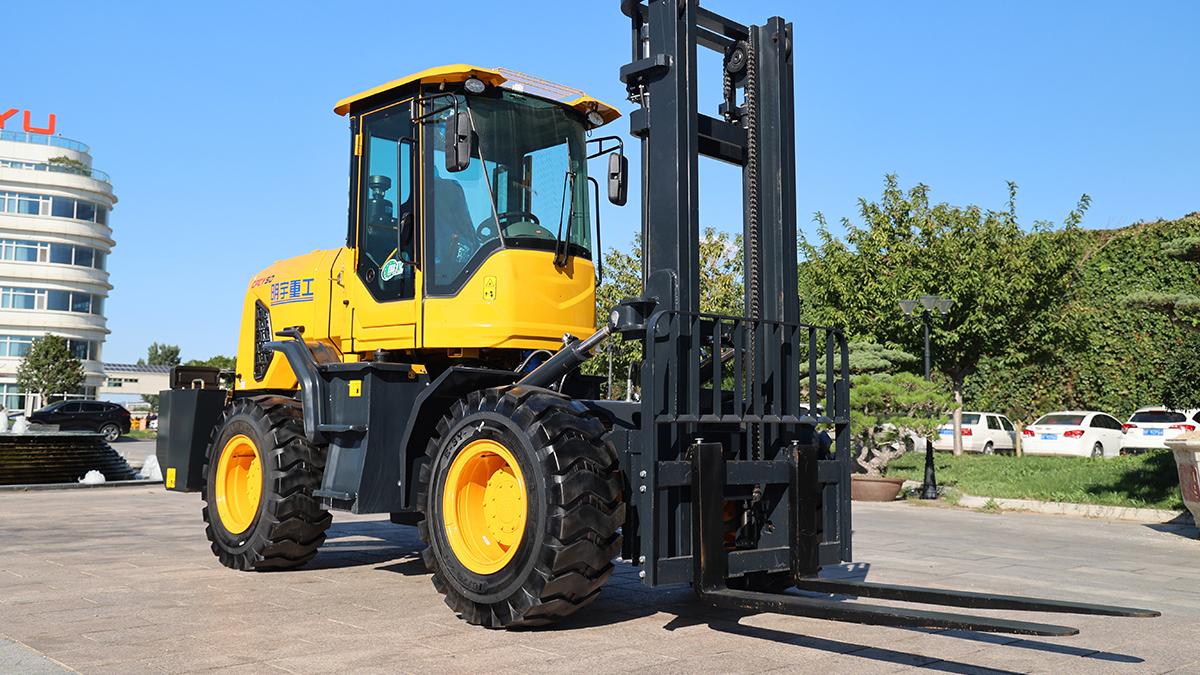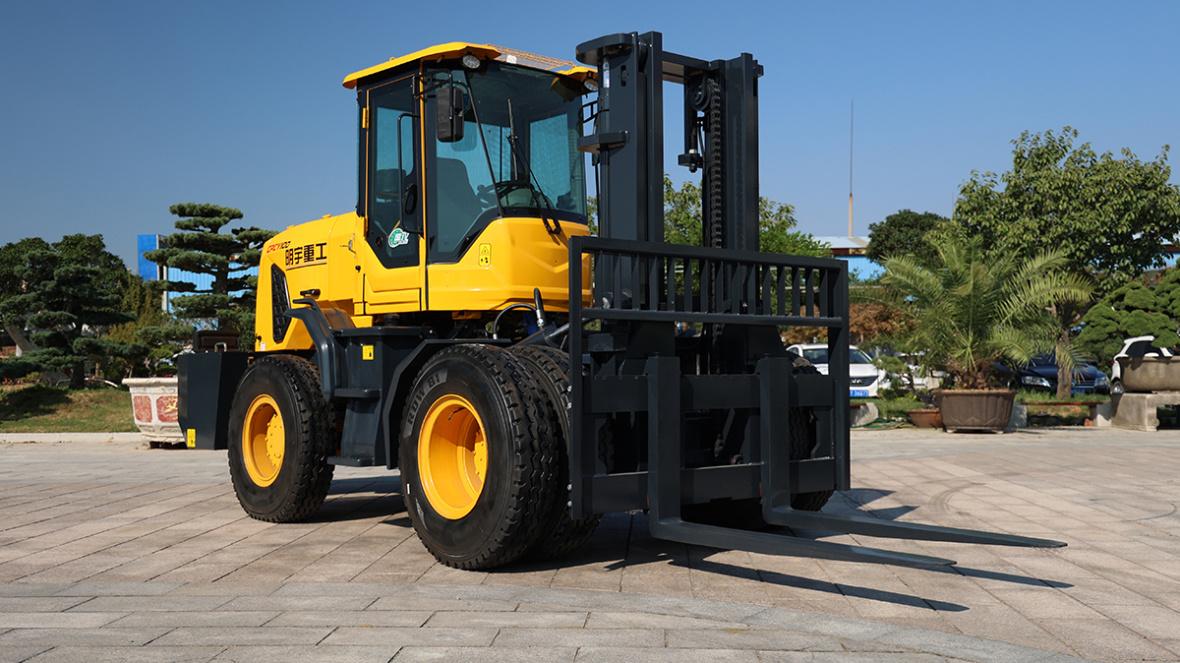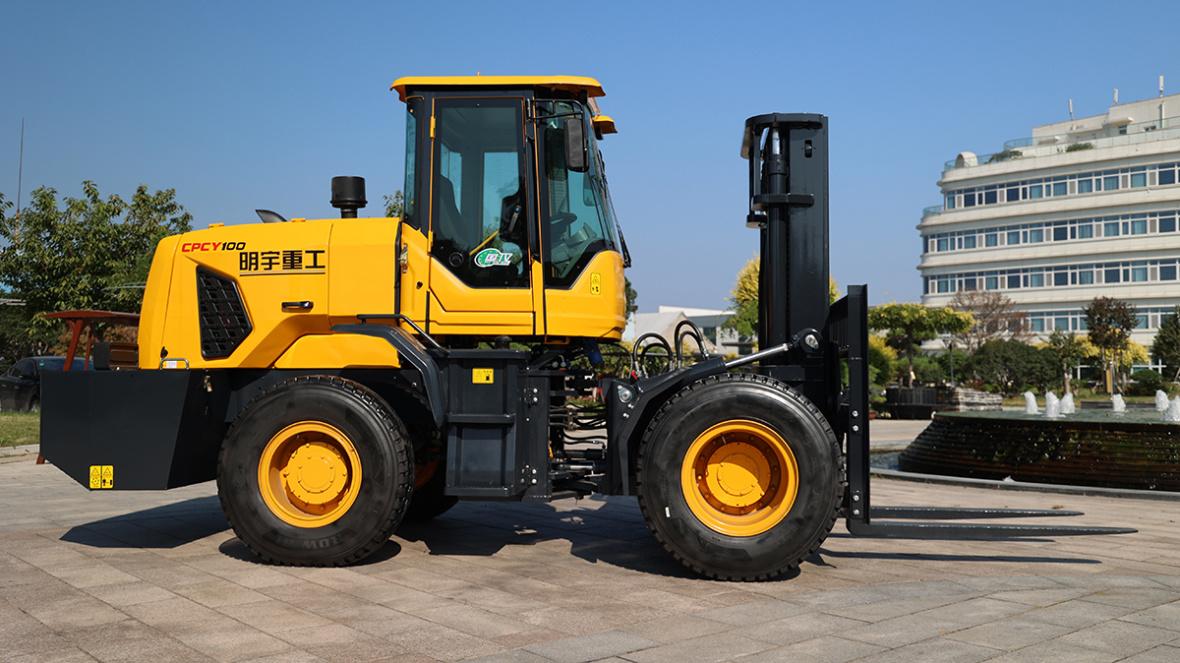What Maintenance Is Required for an Off-Road Forklift?
1. Introduction
Off-road forklifts are essential for industries that operate in rugged terrain—construction, agriculture, logging, and mining. Unlike warehouse forklifts, these machines face mud, gravel, uneven surfaces, and weather extremes. Because of this, maintenance is critical to ensure safety, performance, and durability. This article outlines what maintenance off-road forklifts require on a daily, weekly, and scheduled basis.
2. Overview of Off-Road Forklifts
Off-road forklifts are designed with stronger frames, large pneumatic tires, and powerful engines to handle unpaved surfaces. They are often used in environments that expose them to more dust, moisture, and wear than typical indoor units.
Key features include:
4-wheel drive
High ground clearance
All-terrain tires
Reinforced mast and forks
These features make them reliable—but they also need frequent attention to avoid breakdowns.
3. Daily Maintenance Tasks
To prevent unexpected failures, operators should perform these checks before every shift:
Visual Inspection: Look for leaks, damaged parts, or unusual wear on forks, mast, hoses, and tires.
Fluid Levels: Check engine oil, hydraulic oil, transmission fluid, brake fluid, and coolant.
Tires: Check for air pressure, punctures, or cracking in pneumatic tires.
Greasing Points: Lubricate mast channels, joints, and tilt cylinders.
Battery (if electric): Inspect charge level and terminal cleanliness.
Clean Radiator and Air Intakes: Prevent overheating caused by dirt and debris.
4. Weekly and Monthly Maintenance Tasks
Weekly or every 40–50 operating hours, more in-depth checks should be done:
Inspect hydraulic hoses and cylinders for leaks or fatigue.
Check tire tread and inflation consistency.
Tighten loose bolts and fittings.
Clean or replace air filters especially in dusty conditions.
Test lights, horn, and safety alarms.
Inspect seat belts and safety restraints.
5. Scheduled Maintenance by Operating Hours
Every 250 Hours:
Change engine oil and oil filter.
Replace fuel filter.
Check fan belt tension and wear.
Inspect exhaust system and engine mounts.
Every 500–600 Hours:
Change hydraulic oil and filters.
Inspect and clean radiator and cooling system.
Check axles, steering components, and brakes.
Inspect spark plugs (if gas-powered).
Every 1000+ Hours:
Replace transmission oil and differential oil.
Perform full engine and transmission inspection.
Test electrical system and sensors.
Conduct compression test (if applicable).
6. Seasonal Maintenance Considerations
Off-road forklifts often operate year-round and must be prepared for seasonal challenges:
Winter: Check antifreeze, battery charge, and use winter-grade lubricants.
Summer: Ensure radiator is clean and coolant levels are adequate to prevent overheating.
Rainy/muddy season: Clean undercarriage frequently to prevent corrosion and buildup.
7. Terrain-Related Wear and Tear
Rough terrain accelerates wear on several parts:
Undercarriage and axle boots may get damaged by rocks.
Hydraulic seals can leak if exposed to constant vibration.
Tires wear faster when navigating rocky or wet terrain.
Filters clog quicker in sandy or dusty environments.
Operators should pay close attention and adjust maintenance frequency as needed.
8. Common Maintenance Issues in Off-Road Forklifts
Hydraulic leaks
Overheating due to blocked radiator
Tire damage or sidewall cracks
Loose or worn steering linkage
Contaminated or low oil levels
9. Maintenance Best Practices
To extend your forklift’s life and reduce repair costs:
Keep a detailed maintenance log with dates, hours, and service details.
Train operators to perform basic checks and report issues.
Use OEM filters, fluids, and replacement parts.
Schedule service with certified technicians.
Use telematics to monitor hours and set automatic service reminders.
10. Cost of Maintenance vs. Cost of Downtime
While maintenance may cost a few hundred dollars regularly, neglect can cost thousands in downtime or damage:
|
Maintenance Task |
Cost Estimate |
|
Oil & filter change |
$150–$300 |
|
Tire replacement |
$400–$1000 each |
|
Hydraulic repair |
$2,000–$10,000 |
|
Engine rebuild |
$6,000–$15,000 |
Proper care reduces long-term costs and keeps projects on schedule.
11. Conclusion
Off-road forklifts work in some of the harshest conditions. To keep them running reliably and safely, a consistent and thorough maintenance plan is essential. From daily inspections to scheduled services every 250–1000 hours, each task plays a role in extending the machine’s life and protecting your investment.
Post time:Jul.03.2025



